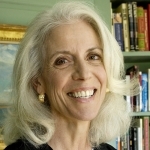 (HOST) Last week, Donate Life Vermont sponsored a Register Rally to encourage people to sign up for the new organ donor registry. Commentator Susan Cooke Kittredge hopes this new initiative will save many lives.
(HOST) Last week, Donate Life Vermont sponsored a Register Rally to encourage people to sign up for the new organ donor registry. Commentator Susan Cooke Kittredge hopes this new initiative will save many lives.
(KITTREDGE) The replacement of knees and hips may become a right of passage for baby boomers. No sooner does one friend of mine recover from such a surgery than another heads off to the hospital.
Aside from these procedures, torn ligaments and tendons are now repaired with great frequency and success, allowing people once plagued by pain to enjoy active lives once again.
From the beginning, doctors have been in the repair business; they heal the sick and mend the broken. They now have in their figurative black bags new, highly developed medicines and compounds with which to practice their trade. They also use some very elemental material: cadaver tissue, bones, ligaments, tendons and skin.
But few of us ever stop to wonder where the cadaver tissue actually comes from. We are familiar with organ transplants, but most of us are unaware of the enormous demand for the other parts of our bodies. We are living longer, and we want our infirmities fixed, and human tissue is often the best choice. Though in the past we may have checked the box on the back of our license indicating our desire to be an organ donor, this method has serious limitations. Through DonateLifeVt.org it is now possible to register our intentions far more effectively.
Until 2005 it simply never occurred to me to wonder where the tissue used in reconstructive surgeries originated. But then I learned about all this the hard way.
Eighteen months after my father died, I was informed that his body had been stolen and sold. The District Attorney’s office in Brooklyn was conducting an investigation into the theft and illegal sale of thousands of bodies. Many of those responsible for these particular crimes are now in prison, but the black market in body parts is still thriving. Ultimately, it’s a simple question of supply and demand; with so few bodies donated, the racket thrives. In this Dickensian scheme, a lot of money changes hands; one body can be worth upwards of $200,000. With the scarcity of legally donated cadavers, funeral homes, hospitals and sometimes prisons are the clandestine sources of supply.
This is shocking and hard to think about, and that is precisely what those involved in the black market are banking on: that we will turn our backs and let them reap their fortunes.
We can push for further investigations and regulations, but the real way to stop the illegal trade in body parts may be to flood the market with legally donated bodies. This might be the ultimate in recycling – but it’s acceptable only if we’ve made the choice ourselves.
I was horrified by what happened to my father’s body; it was a theft that occurred in the dark of night when false documents were generated, my signature forged and travesties committed. It was a violation of his remains and his right to choose.
I applaud the new registry and hope that education and reflection will shine much-needed light on this issue, push back the darkness and the thieves, and save lives.